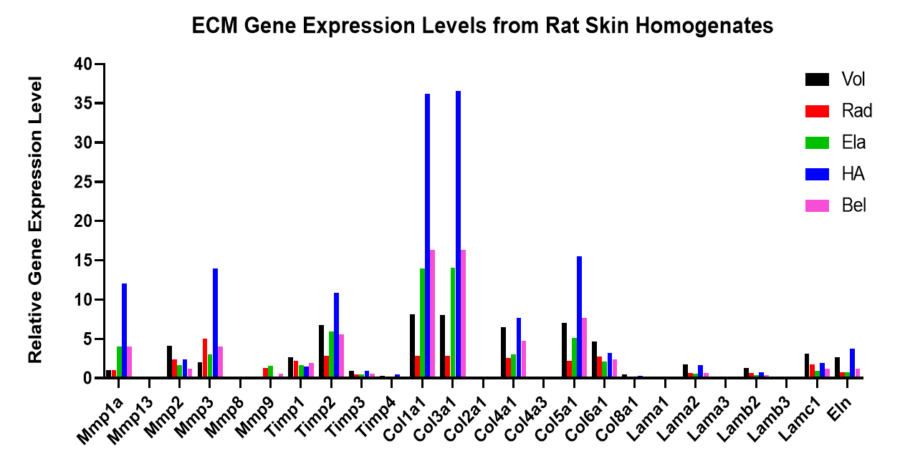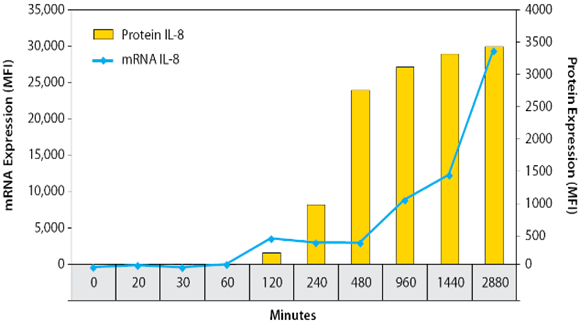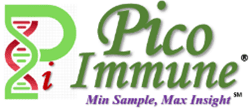QuantiGene™ Plex Assay
Multiplex nucleic acid testing allows multiplexed gene expression analysis (RNA targets) and DNA copy number variation (CNV) analysis, to measure up to 80 genes in a single sample.
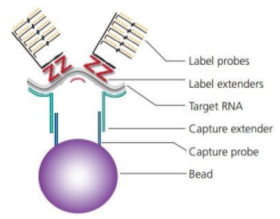
About QuantiGene Plex Assays
QuantiGene Plex Assays are based on the clinically proven branched DNA (bDNA) signal amplification technology. The assay enables detection and quantitation of multiple RNA targets simultaneously (up to 80 mRNA targets in a single well) using a combination of bDNA signal amplification and Luminex beads (xMAP®) technologies. QuantiGene assays accurately and precisely quantitate RNA, directly from samples without requirements of RNA purification.
How Does the Assay Work?
QuantiGene assays utilize branched DNA (bDNA) technology, which has been approved in diagnostic assays for HIV-1 and other diseases
- Cells or tissue samples are homogenized to release the target RNA.
- Oligonucleotide probe sets are incubated with the target RNA on a capture plate.
- The probes cooperatively hybridize to the targets, and capture probes are bound to the beads, capturing the target RNA.
- Signal amplification is performed via sequential hybridization of the bDNA pre-amplifier, amplifier, and label-probe molecules to the target.
- The resulting fluorescence signal associated with individual Capture Beads is read on a Luminex flow cytometer.
Assay Benefits
- Fast sample prep: perform the assay directly on cell lysates or tissue homogenates. RNA purification is optional
- Precisely detect subtle changes: detect gene expression changes smaller than 10%
- Superior specificity: delivers greater specificity than other common technologies, and distinguishes between closely related genes due to probe design with several capture points along the target mRNA of interest
- Flexibility: amenable to automation for use in routine compound screening
- True multiplexing: measure up to 80 genes, including housekeeping genes, in the same well with no cross-reactivity
- Standardized platform: 96-well plate format using Luminex assay systems
- Simple workflow: ELISA-like workflow for direct hybridization of transcripts to beads and transcript labeling
- Housekeeping genes (HKG): multiple HKGs of different abundancy can used as normalization controls for more reliable data analysis
Sample Requirements
- Minuscule samples: few cells or small piece of tissues
- Compatibility: works with a variety of sample types, such as cultured cells, whole blood, dried blood spots, fresh or frozen animal or plant tissues, purified RNA and heavily degraded and cross-linked RNA in formalin-fixed, paraffin-embedded (FFPE) tissues, etc.
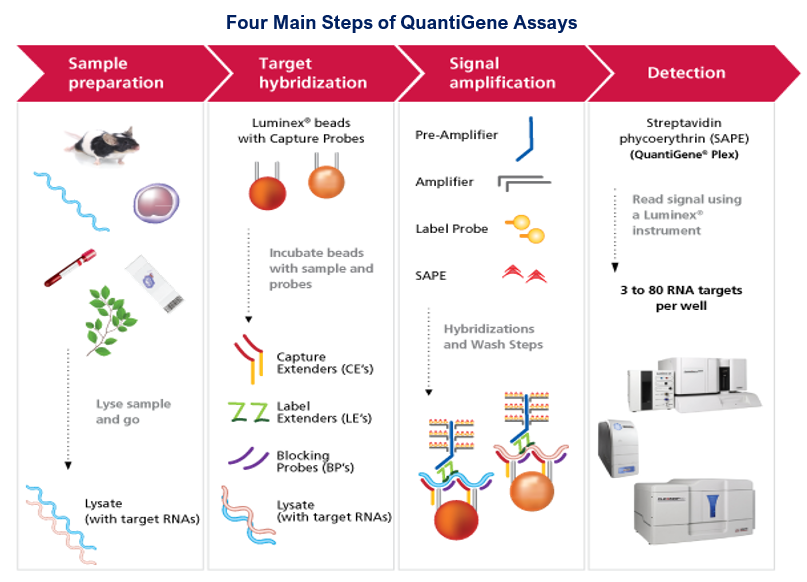
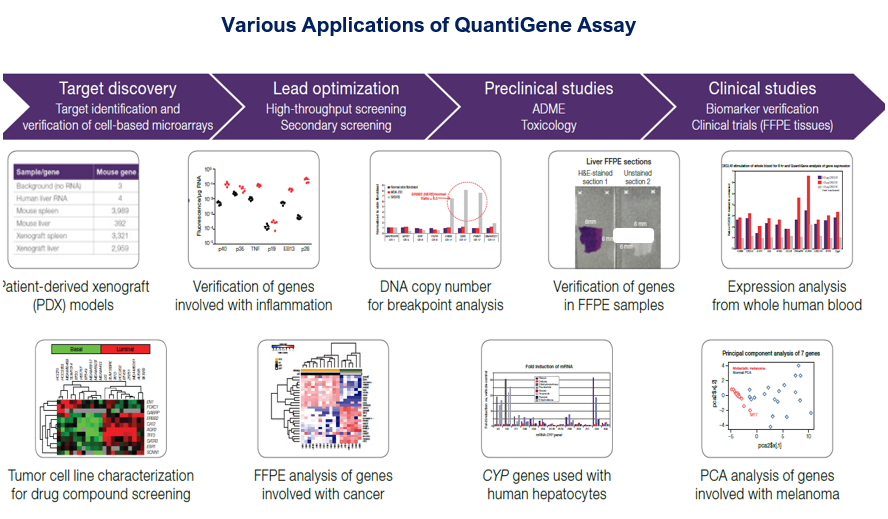
Service Features
- High throughput: 96 and 384 -well formats, up to 80 X 384 readouts
- Simultaneous quantitation: assay both mRNA and protein levels in cells or cell culture supernatants
- Highly reproducible
- Flexible: we can quantify any gene/ protein of interest. Targets of interest and their layout are custom designed so we can deliver data from as few or as many samples / replicates as needed
- State-of-the-art platforms: Luminex-200, FlexMAP 3D; VorTemp™ 56 Shaking Incubator or Hybridization Oven
- Large inventory of verified genes: over 20,000 genes can be mixed to create pathway- and disease-themed panels, custom probes designed to any sequence within a few days
- Extensive data analysis
- Timely data delivery: 1-4 weeks or sooner- dependent upon receiving test samples
- 30+ years of accumulated experience: Expert data analysis and interpretation, high quality scientific and technical support
- Optional tests
- We offer qPCR for validation of any gene of interest
- RNA samples can be checked for integrity and quality (IQ assay) before gene array analysis
- We have a library of >4000 validated antibodies to examine samples at protein levels using quantitative Automatic WB.
- We offer ~100 human cancer cell lines and many types of primary cells for testing drugs and biologicals for specific projects
Why Choose Multiplex Quantigene Assay over qPCR?
| Multiplex Quantigene Assay | qPCR Assay | |
|---|---|---|
| Sample Preparation | directly from cell tissue/lysates to avoid biases, sample loss, false results | RNA extraction |
| Compatible samples | various samples including cells, tissues, FFPE, whole blood, Paxgene blood, isolated RNA, and more | Limited |
| RNA purification | NOT needed, to eliminate contamination | Needed |
| cDNA synthesis | NOT needed, to eliminate bias | Needed |
| PCR amplification | Amplify signals using branch DNA technology | Amplify target genes |
| Protein and gene expression | simultaneous quantification | Limited |
| Multiplex | up to 80 genes in a single well without cross-reactivity | Very limited, need multiple attempts; concern of specificity and sensitivity |
| Validation | Validated panels of targets available | Limited |
| Customizable | Yes | Yes |
| Z- factor | Higher | Lower |
| Cost | 50% lower, more data per sample | Higher |
| Data delivery | Faster, validated gene panels avoiding primer design/optimization | Slower |
Multiplex Quantigene Assay Data Examples
